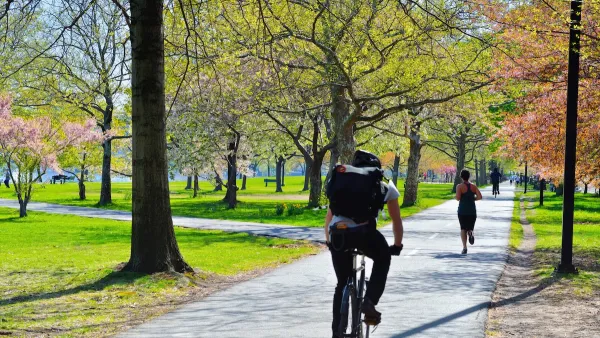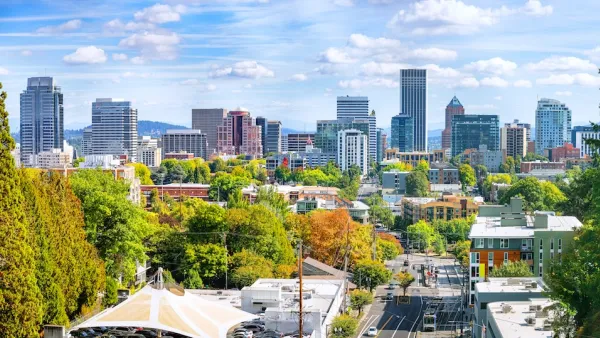Growth and development are the biggest obstacles to Washington, D.C.'s plans to add more than 10,000 trees every year over the next 25 years.

John D. Harden details the ongoing effort to replant the District of Columbia with trees—an effort frustrated recently by the District's recent rate of development and economic growth.
"As part of a concentrated, six-month effort that began in October, crews planted more than 8,500 trees in an attempt to shroud 40 percent of the city under tree canopy by 2032," writes Harden. "But midway through a years-long tree campaign, the same economic successes that ushered in new residents and transformed neighborhoods across Washington are threatening to stymie the city’s woodland progress."
The District has added about 100,000 trees in the past decade, according to the article, but is running out of space to plant more, even as the District prepares a comprehensive plan update that calls for both new development and new trees.
"Andrew Trueblood, director of the D.C. Office of Planning, acknowledged the contradiction, saying the document serves as a framework for city leaders," reports Harden. "The challenge will be determining how to prioritize its recommendations."
The article includes more context, with testimonies from experts and city officials on the challenges, and the benefits, of the effort to replant trees in the District.
FULL STORY: D.C. planted nearly 80 trees a day to reach a canopy target. It’s running out of space.

National Parks Layoffs Will Cause Communities to Lose Billions
Thousands of essential park workers were laid off this week, just before the busy spring break season.

Retro-silient?: America’s First “Eco-burb,” The Woodlands Turns 50
A master-planned community north of Houston offers lessons on green infrastructure and resilient design, but falls short of its founder’s lofty affordability and walkability goals.

Delivering for America Plan Will Downgrade Mail Service in at Least 49.5 Percent of Zip Codes
Republican and Democrat lawmakers criticize the plan for its disproportionate negative impact on rural communities.

Test News Post 1
This is a summary

Test News Headline 46
Test for the image on the front page.

Balancing Bombs and Butterflies: How the National Guard Protects a Rare Species
The National Guard at Fort Indiantown Gap uses GIS technology and land management strategies to balance military training with conservation efforts, ensuring the survival of the rare eastern regal fritillary butterfly.
Urban Design for Planners 1: Software Tools
This six-course series explores essential urban design concepts using open source software and equips planners with the tools they need to participate fully in the urban design process.
Planning for Universal Design
Learn the tools for implementing Universal Design in planning regulations.
EMC Planning Group, Inc.
Planetizen
Planetizen
Mpact (formerly Rail~Volution)
Great Falls Development Authority, Inc.
HUDs Office of Policy Development and Research
NYU Wagner Graduate School of Public Service





























